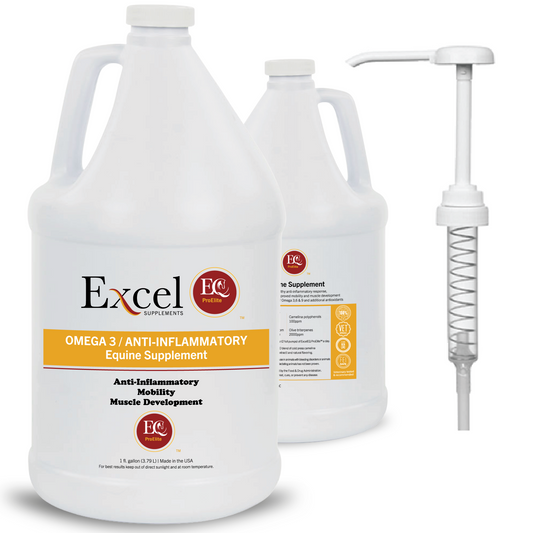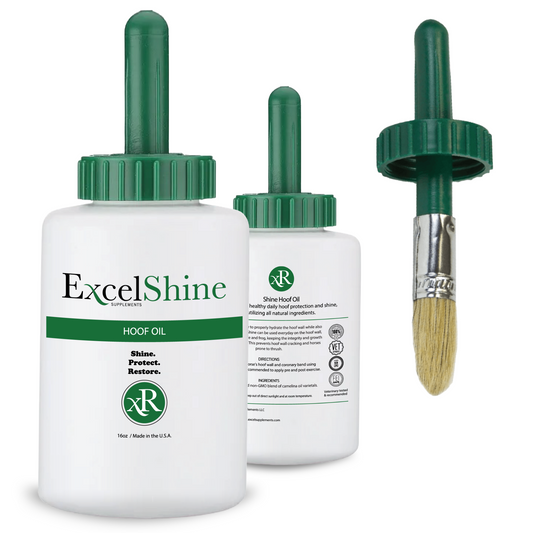Understanding Equine Protozoal Myeloencephalitis (EPM)
Share
Equine Protozoal Myeloencephalitis (EPM) is a serious disease affecting the central nervous system of horses. Predominantly seen in the United States, this condition is especially prevalent in regions with opossums and other forest creatures.
What Causes EPM in Horses?
The primary culprit of Equine Protozoal Myeloencephalitis is the protozoan parasite Sarcocystis neurona. This single-celled parasite completes a complex life cycle, ultimately invading the horse’s central nervous system.
Life Cycle of Sarcocystis neurona
- Infection Source: The host for Sarcocystis neurona is the opossum. These animals shed the infectious sporocysts in their feces.
- Transmission to Horses: Horses ingest the sporocysts through contaminated feed or water. Once ingested, the sporocysts travel to the horse’s intestines.
- Development: Inside the horse, the parasite transforms into merozoites, which then migrate to the brain and spinal cord.
- Damage and Symptoms: Merozoites cause inflammation and damage to the central nervous system, leading to various neurological symptoms.
Intermediate hosts like skunks, armadillos, raccoons, and even cats can carry Sarcocystis neurona, but they do not spread the infectious form.
Recognizing the Symptoms
Symptoms of EPM can vary widely depending on the extent of neurological damage. Key signs to watch for include:
Common Symptoms
- Asymmetry: Noticeable differences in muscle development and distribution on either side of the body.
- Ataxia: Lack of coordination, which may show as head tilting, intermittent lameness, and poor balance.
- Atrophy: Muscle wasting or shrinking, which can be severe in affected horses.
Severe Symptoms
- Seizures and collapsing
- Inability to stand
- Significant mood changes and difficulty swallowing
If you observe these symptoms in your horse, contact your vet immediately for an in depth evaluation and diagnosis.
How Do Horses Get EPM?
Several factors increase the risk of EPM infection in horses:
Risk Factors
- Immune System Health: Horses with a weak immune systems or autoimmune conditions are at higher risk.
- Stress: High-stress situations such as intensive training, long travel, or environmental changes can compromise the immune system.
- Lifestyle and Age: Horses frequently exposed to different environments or those that are older may be more susceptible.
- Geography: Living in areas where opossums are common increases the risk of exposure.
Diagnosing EPM in Horses
Diagnosing EPM can be challenging, but veterinarians use several methods:
- Blood Tests: These tests can detect antibodies against Sarcocystis neurona, indicating exposure.
- Cerebrospinal Fluid (CSF) Analysis: A positive result in CSF testing is more indicative of active infection.
Research is ongoing to improve diagnostic techniques. Institutions like UC Davis are leading efforts to enhance the understanding and testing of equine infectious diseases.
Treatment Options
If diagnosed, treatment options are available, though they can be costly and time-consuming.
Treatment Methods
- Medications: Your vet may prescribe anti-protozoal drugs to target the parasite. Treatment typically lasts from one to several months.
- Supportive Care: Administering NSAIDs can help reduce inflammation caused by the die-off of protozoa.
At Excel Supplements, we offer ExcelEQ ProElite™ as a complementary support to traditional treatments. Our ProElite™ formula is rich in natural vitamin E antioxidants, polyphenols, and plant-based omegas, which help maintain optimal nutrient absorption and protect against oxidative stress during treatment.
How to Prevent EPM in Horses
Prevention is key to avoiding EPM. Implement the following practices:
- Cleanliness: Regularly clean feeding and watering areas to remove potential sources of infection.
- Balanced Diet: Provide a well-balanced diet with high-quality ingredients and processing standards.
- Regular Check-Ups: Schedule routine veterinary exams to monitor your horse’s health and catch any issues early.
By staying vigilant and proactive, you can help safeguard your horse from EPM and ensure their overall well-being.
For more detailed information on EPM and ongoing research, you can visit these sources:






